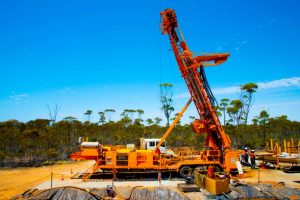When it comes to cutting materials for use in digital manufacturing, there are several options to choose from. Every single one of them can make use of the information contained within a 2D file. This allows you to create the object that you need to create. We can use all those techniques or methods of cutting for rapid production or prototyping.
Laser cutting and waterjet cutting are two of the most sought after cutting systems today, and you can use either of the two for various digital manufacturing applications.
What we have below is a comparative analysis of these two cutting options. These points we have here can help us determine which among the two is the most fitting to use for a particular application.
Waterjet Cutter: How Does It Work?
We qualify the water jet cutting method as a subtractive system of manufacturing. It is a water-based material system, hence the name. This technique in cutting makes use of pressurized water and focuses it to a tiny point on the subject, cutting/slicing through it in no time.
It is very important for the pressure in a waterjet system to reach as high as 6000 pounds/sq inch. This pressure level is strong enough to make the stream of water cut through a solid object.

To further intensify its cutting power and to shorten also the cutting time, abrasive garnet particles are mixed into the water itself. These fine particles added to pressurized water will increase the spectrum of materials that it can cut.
What Operation Can Waterjet Cutting and Laser Cutting Systems Perform?
Laser machine cutters can also efficiently handle engraving works, which is unlikely to do with waterjet machines. Water jet systems limit you to just cutting/slicing through a solid object.
Laser engraving is most useful if your material cutting work involves adding of, say, serial numbers or any kind of assembly marks that you need to incorporate into the object.
While we do not intend a waterjet system for partially cut 3D material, laser systems do not have this feature, hence can’t expect them to deliver this functionality. With material combinations, both techniques should be veered away from.
In laser cutting systems, cutting through a combination of materials that happens to have different melting points will present a challenge. For a water jet system, there is the risk of delamination, instead.
Video Credit to ICEE
Precision Level of Each Cutting Technique?
Compared to waterjet cutting, laser cutters are a notch higher with cutting precision. The laser system’s minimum cutting slit size is “0.006” (0.15mm) but it is 0.02” or 0.5mm for the waterjet system.
Regarding processing tolerances, laser systems have approximately “0.002” or (0.05 mm) while for water jet cutting, it is 0.008” or 0.2mm.
Wrapping Up!
To summarize the brief points we’ve provided above, the laser cutting system is a very precise material cutting technique. It is also safe to say that it is more appropriately fitted for detailed cutting jobs such as engraving.
In the case of waterjet systems, they are best to use when your project involves working on thicker sheets and with no material restrictions.

